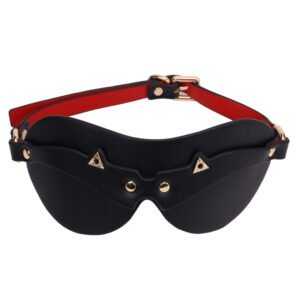How to Make a Silicone Dildo: A Step-by-Step Guide
June 30, 2025 by
ellenyi@adultstoysgd.com
Product KnowledgeAre you curious about how realistic dildos and other high-quality adult toys are manufactured? Whether you’re a brand procurement specialist, wholesaler, or platform retailer, understanding the production process ensures you source safe, durable, and market-ready products. From design to final inspection, each step is critical to delivering body-safe pleasure products that meet international standards.
🔍 What Is the Process of Making a Silicone Dildo?
The process involves:
✔ Designing
✔ Mold Creation
✔ Silicone Mixing
✔ Curing
✔ Finishing
For specialized products like suction cup dildos, strap-on dildos, vibrating dildos, or thrusting dildos, additional components (bases, motors, mechanisms) are integrated. Below, we break down each stage to help you evaluate suppliers and ensure product excellence.
Ready to learn what goes into crafting premium silicone dildos? Let’s dive in!
🎨 1. Design and Sculpting: Crafting the Perfect Shape
The foundation of a great realistic dildo or fantasy design starts here:
✏️ Sketching & 3D Modeling: Designers create detailed sketches or digital models, focusing on ergonomics and aesthetics.
🖌️ Sculpting: Artists use clay or wax to sculpt lifelike textures (for realistic dildos) or innovative shapes.
🌟 Why It Matters: A well-designed prototype ensures market appeal and functionality, whether for strap-on dildos or standalone products.
![]()
🔧 2. Mold Creation: Precision for Mass Production
Molds must capture every vein, curve, or suction cup base accurately:
⚙️ Material: High-grade silicone or aluminum molds for durability.
🔄 Process: The prototype is suspended in a mold box, and liquid silicone rubber is poured over it.
💡 Pro Tip: For suction cup dildos, the mold includes a flared base design.
🧪 3. Silicone Preparation: Safety First
Only medical-grade platinum silicone is used—non-toxic, hypoallergenic, and compliant with FDA/CE standards:
⚗️ Mixing: Base and catalyst are blended evenly.
🎨 Additives: Colors or softeners are added for customization (e.g., flesh tones for realistic dildos).
⚠️ Key Point: Cheap silicones may contain fillers—always verify material certifications!
![]()
🔥 4. Pouring and Curing: Ensuring Durability
🌀 Pouring: Silicone is poured slowly to avoid air bubbles (critical for vibrating dildos to prevent internal voids).
⏳ Curing: Cures at room temperature (24 hours) or via heat acceleration (4–6 hours).
🔌 For Vibrating/Thrusting Dildos: Motor compartments are inserted before curing.
✂️ 5. Demolding and Finishing
🔪 Seam Removal: Excess material is trimmed; surfaces are polished for a seamless feel.
✅ Quality Checks: Each realistic dildo is inspected for defects, especially suction cup dildos (base adhesion) or strap-on dildos (O-ring compatibility).
⚡ 6. Assembly (For Specialized Products)
📳 Vibrating Dildos: Waterproof motors are embedded, and battery compartments are sealed.
🔄 Thrusting Dildos: Internal mechanisms are tested for speed and noise levels.
🧼 7. Sterilization and Packaging
🚿 Cleaning: Products are washed in antimicrobial solutions.
📦 Packaging: Retail-ready boxes with compliance labels (ROHS, REACH).
💰 For Wholesalers: Bulk packaging options reduce costs.
🤝 Why Partner with a Professional Manufacturer?
✔ Consistency: Molds allow scalable production of realistic dildos, suction cup dildos, etc.
✔ Safety: Medical-grade silicone avoids legal risks for retailers.
✔ Customization: Adapt designs for strap-on dildos or niche markets.
🔚 Final Thoughts
Understanding the meticulous process—from sculpting realistic dildos to integrating vibrating or thrusting features—helps wholesalers and retailers source superior, compliant products.
Latest Articles

September 25, 2025
Why Does Wearing a Blindfold Make Intimacy So Exciting?
(🔍 Problem) Have you ever felt like your intimate life has fallen into a predictable routine? That spark of novelty

September 24, 2025
Why Do People Actually Enjoy Being Spanked?
❓ The Problem Have you ever scrolled through a forum or overheard a conversation about spanking and felt a little…

September 23, 2025
Why Is a Spanking Paddle Your Next High-Margin Product?
🔍 (P) Problem: As an adult product wholesaler or retailer, you’re constantly searching for new categories that promise high-profit margins
September 22, 2025
The Ultimate B2B Guide to Remote Control Sex Toys: Everything Wholesalers and Retailers Must Know
Are you a wholesaler or retail buyer watching the SexTech market explode, feeling the pressure to stock remote control sex


